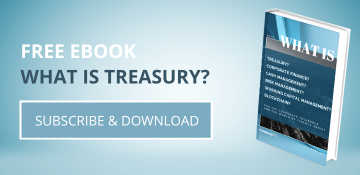How to reduce your credit risk
14-10-2019 | Marco Lassche |
It is nice to sell your products at a good price. But what if you have delivered goods to your customer, and he is not able to pay? In this article we give you over 15 options, how to reduce your credit risk.
In this article we give you guidance, how to control and cover your credit risk. We focus on the sales perspective, however it is also applicable on the purchases side; a prepayment to a supplier causes also credit risk.
Ways to control your credit risk:
- Make a credit check on your counterparty before onboarding, and make sure to keep doing this during the whole relationship. Credit rating agencies like Creditsafe, Graydon, Dunn & Bradstreet make their business out of running credit checks on companies. They also have good tools (risk alerts), to follow the credit worthiness of your counterparty.
- Transfer your credit risk and insure your counterparty risk to a credit insurer (Atradius, Euler, Coface). In case you trade with unstable countries, do not forget to insure the political risk. If insurance of your counterparty is not possible, this might be already a warning. However it can also be a just established subsidiary, being part of a bigger credit worthy parent.
- Bank guarantee: the bank of your customer will ensure the payment if the customer is unable to.
- Execute the exchange (payment vs. property of goods) with your counterparty at the same time or use a trustable intermediary.
– Direct Collection
– Letter of Credit (LC)In a direct collection as well as in a LC you handover agreed documents to the bank. The biggest difference between direct collection and Letter of Credit: In a collection the bank pays you only, when the customer paid to the bank. In an LC the bank of the buyer pays you when the agreed documents are delivered by the seller. So for goods that are not easily sold to another counterparty, we would advise to go for a LC.Other options
- Use an escrow account of the warehouse.
The warehouse releases the goods to the buyer, when they received the payment, and forward the payment to the seller. - In case of transport of the goods by ocean freight you can use the shipper to be the intermediary.
When your sold goods are transported by sea, you can give the release to the shipper to handover the Bill of Lading (property document) to the buyer. Normally this is done after payment of the buyer. - Use factoring. You sell your debtor at a discount to a factoring company. Make sure that you cannot be liable for non-payment (non-recourse basis).
- Ask for a parent guarantee if the counterparty that you trade with is part of a big parent company. This parent guarantee can also be used to get an insurance at your credit insurer.
- Diversification. Try to limit credit exposure on one customer, one region (concentration ratio’s). Ensure that a non-payment of one not covered counterparty will not put you in any liquidity squeeze and put your company at stake.
- Give collection responsibility to the sales team. A trader works mainly for its sales bonus. In my opinion, to be eligible for the bonus, the whole order to cash cycle should be fulfilled. What if you give already bonus to a sale, but the invoice is not paid. So give the trader also the responsibility for collection. In this way he will be more critical with onboarding his customers, agreeing on payment terms and fight for the invoice to get paid.
- Create your own financial buffer; an umbrella for rainy days.
- Limit the number of payment terms for your customers, and make sure that you keep them within the Terms & Conditions of insurance company.
- Determine who within the company has the responsibility for the credit risk management and setting the credit limits. Most of the time this is a collaboration between treasury, sales and controlling team, and final responsibility at CFO.
As said, running a business hardly goes without credit risk, but there are a lot of tools that can help you to limit it to an extent that is acceptable.
Please feel free to contact me if you need any further information or assistance in setting up a framework to control your credit risk.
Founder and Owner of at Bedrijfskostenexpert
Treasurer and Project Manager at Van Caem Klerks Group
treasuryXL Ambassador



